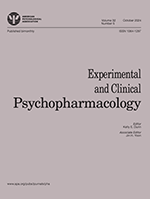“Anecdotal evidence that cannabis preparations have medical benefits together with the discovery of the psychotropic plant cannabinoid Δ9-tetrahydrocannabinol (THC) initiated efforts to develop cannabinoid-based therapeutics.
These efforts have been marked by disappointment, especially in relation to the unwanted central effects that result from activation of cannabinoid receptor 1 (CB1), which have limited the therapeutic use of drugs that activate or inactivate this receptor.
The discovery of CB2 and of endogenous cannabinoid receptor ligands (endocannabinoids) raised new possibilities for safe targeting of this endocannabinoid system. However, clinical success has been limited, complicated by the discovery of an expanded endocannabinoid system – known as the endocannabinoidome – that includes several mediators that are biochemically related to the endocannabinoids, and their receptors and metabolic enzymes.
The approvals of nabiximols, a mixture of THC and the non-psychotropic cannabinoid cannabidiol, for the treatment of spasticity and neuropathic pain in multiple sclerosis, and of purified botanical cannabidiol for the treatment of otherwise untreatable forms of paediatric epilepsy, have brought the therapeutic use of cannabinoids and endocannabinoids in neurological diseases into the limelight.
In this Review, we provide an overview of the endocannabinoid system and the endocannabinoidome before discussing their involvement in and clinical relevance to a variety of neurological disorders, including Parkinson disease, Alzheimer disease, Huntington disease, multiple sclerosis, amyotrophic lateral sclerosis, traumatic brain injury, stroke, epilepsy and glioblastoma.”
https://www.ncbi.nlm.nih.gov/pubmed/31831863
“The existence of the endocannabinoidome explains in part why some non-euphoric cannabinoids, which affect several endocannabinoidome proteins, are useful for the treatment of neurological disorders, such as multiple sclerosis and epilepsy.”

 “Brain trauma was clinically associated with increased osteogenesis in the appendicular skeleton. We showed previously in C57BL/6J mice that mild traumatic brain injury (mTBI) transiently induced bone formation in the femur via the
“Brain trauma was clinically associated with increased osteogenesis in the appendicular skeleton. We showed previously in C57BL/6J mice that mild traumatic brain injury (mTBI) transiently induced bone formation in the femur via the 
 “Cannabidiol (CBD), a non-euphorigenic compound derived from
“Cannabidiol (CBD), a non-euphorigenic compound derived from  “The endocannabinoid system (ECS) is an extensive endogenous signaling system with multiple elements, the number of which may be increasing as scientists continue to elucidate its role in human health and disease. The ECS is seemingly ubiquitous in animal species and is modulated by diet, sleep, exercise, stress, and a multitude of other factors, including exposure to phytocannabinoids, like
“The endocannabinoid system (ECS) is an extensive endogenous signaling system with multiple elements, the number of which may be increasing as scientists continue to elucidate its role in human health and disease. The ECS is seemingly ubiquitous in animal species and is modulated by diet, sleep, exercise, stress, and a multitude of other factors, including exposure to phytocannabinoids, like 
 “Cannabidiol (CBD) is a natural compound of cannabis, which exerts complex and widespread immunomodulatory, antioxidant, anxiolytic, and antiepileptic properties. Many experimental data suggest that CBD could have several types of application in alcohol use disorder (AUD) and alcohol-related damage on the brain and the liver.
“Cannabidiol (CBD) is a natural compound of cannabis, which exerts complex and widespread immunomodulatory, antioxidant, anxiolytic, and antiepileptic properties. Many experimental data suggest that CBD could have several types of application in alcohol use disorder (AUD) and alcohol-related damage on the brain and the liver. “Neurological dysfunctions are the most impactful and persistent consequences of traumatic brain injury (TBI). Indeed, previous reports suggest that an association between TBI and chronic pain syndromes, as well anxio-depressive behaviors, tends to be more common in patients with mild forms of TBI. At present, no effective treatment options are available for these symptoms.
“Neurological dysfunctions are the most impactful and persistent consequences of traumatic brain injury (TBI). Indeed, previous reports suggest that an association between TBI and chronic pain syndromes, as well anxio-depressive behaviors, tends to be more common in patients with mild forms of TBI. At present, no effective treatment options are available for these symptoms.